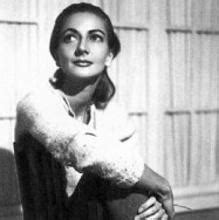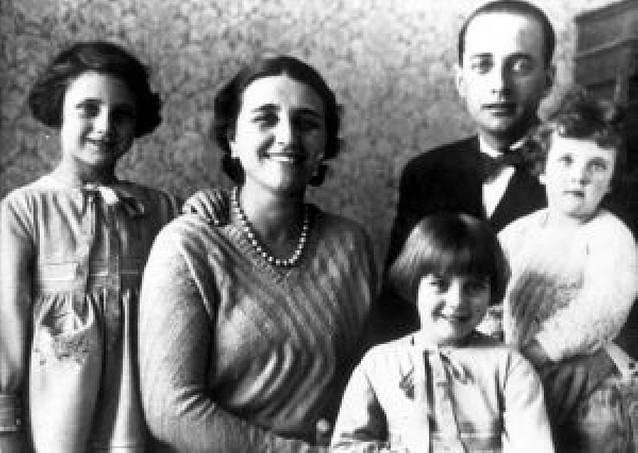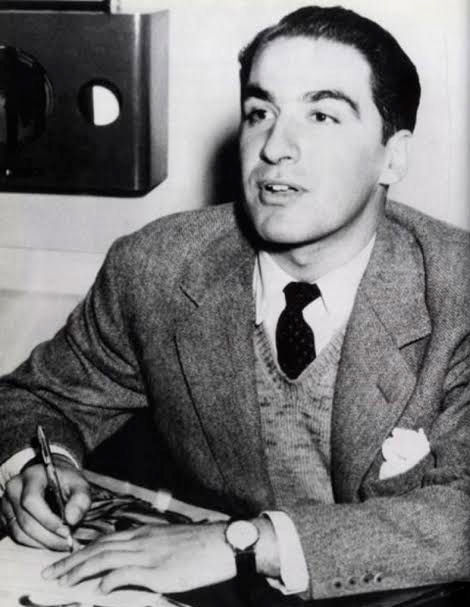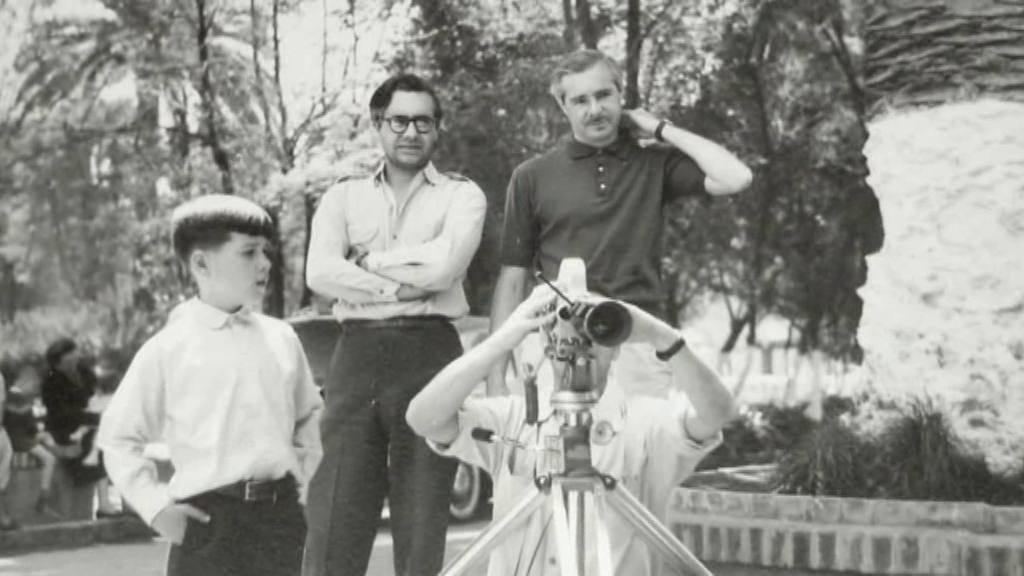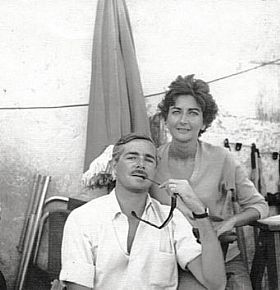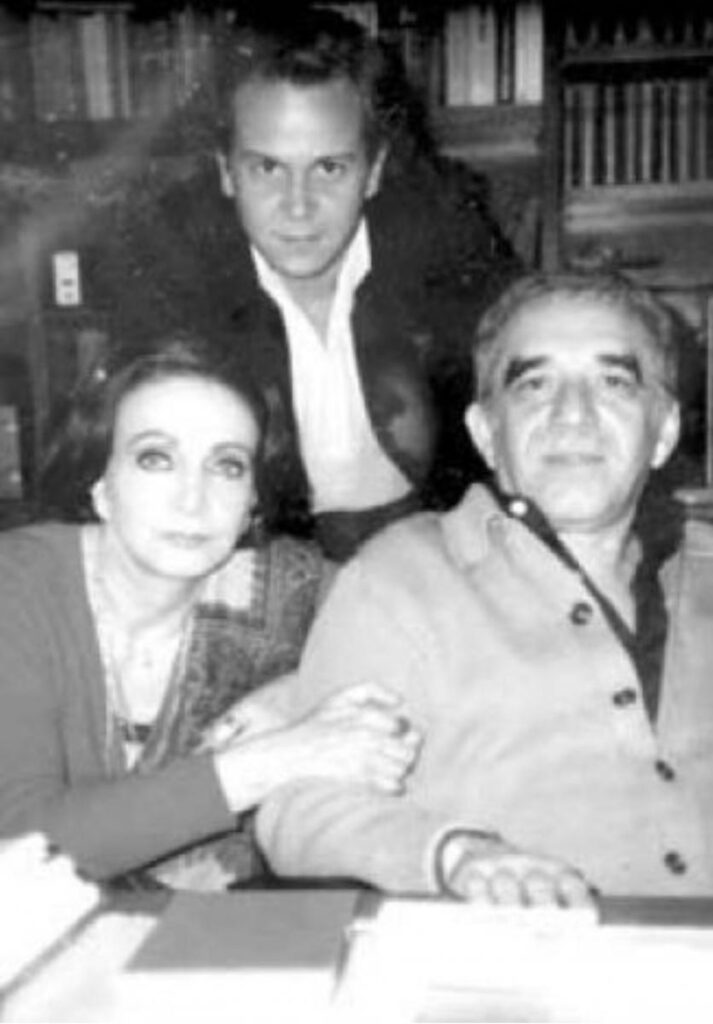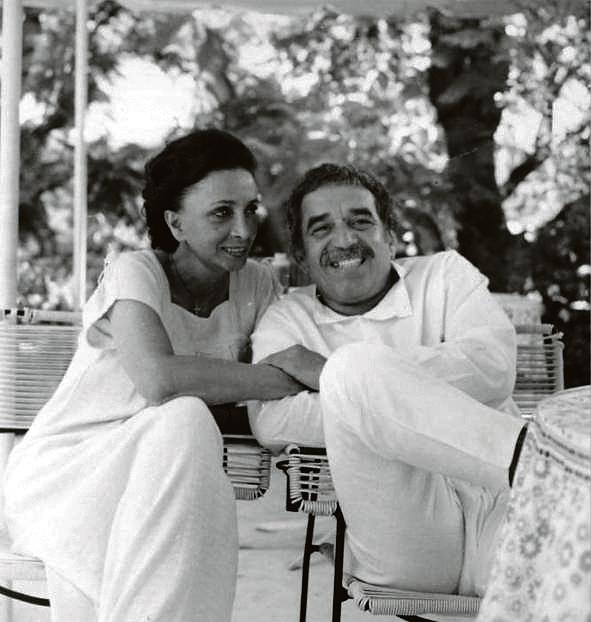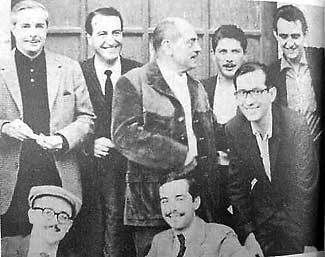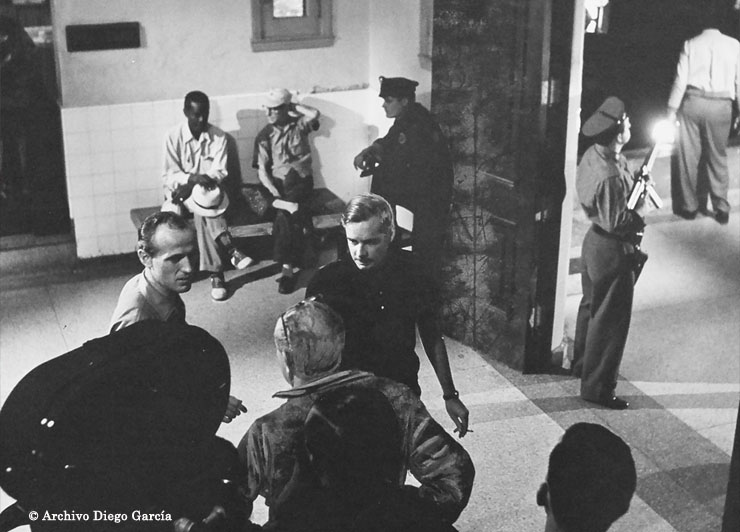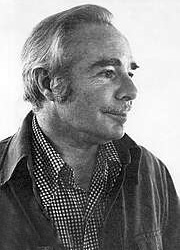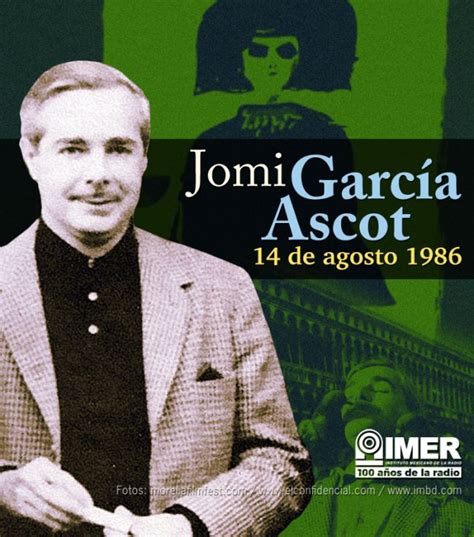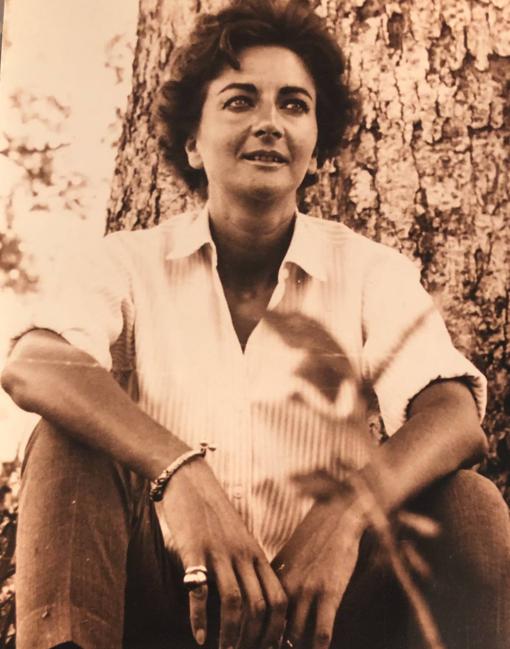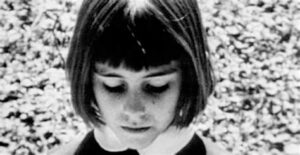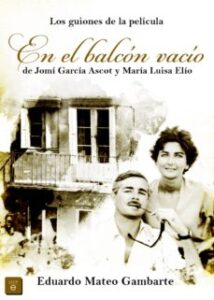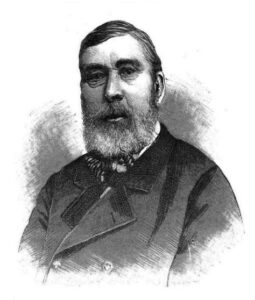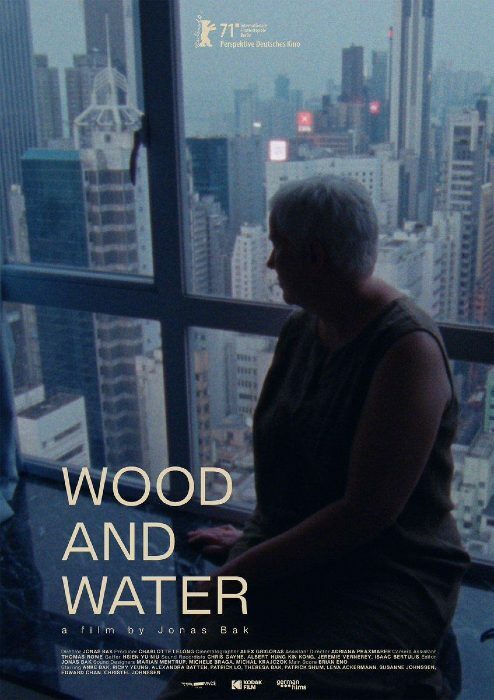Nada es como es, sino como se recuerda. (Ramón del Valle Inclán)
En El balcón vacío es una película mítica dirigida por Jomí (José Miguel) García Ascot en México (fundador el Cine Club de México y del Instituto Francés para la América Latina, junto con Jean Francois Ricard y José Luis González de León).
Realizada entre 1961 y 1962, a partir de relatos autobiográficos líricos de María Luísa Elío, entonces inéditos, más tarde recogidos y publicados, en el libro Tiempo de llorar y otros relatos, (con prólogo de Álvaro Mutis).
Película rodada a los domingos, durante 40 fines de seman, con actores no profesionales, todos amigos, hijos de republicanos. Fue una realización amateur, todos cooperaron con lo que pudieron (dos cuadros donados por pintores famosos fueron subastados). Rodada en distintas ubicaciones: en el Ateneo Español, el Parque Lira, el Colegio Madrid, el Edificio Condesa, el Parque Nacional Desierto de los Leones, el restaurante Bellinghausen, el Panteón Español, el Sanatorio Español y otros lugares de la Ciudad de México.
Esta película es un auténtico manifiesto del cine independiente y del cine de autor, de una calidad estética y literaria, muy notable. Una película en que se notan fuertes influencias de la Nueva Ola francesa, protagonizada por Nuri Pereña, María Luisa Elío, Conchita Genoves, Jaime Ñuñoz de Baena, Belina García, Fernando Lipkau, Alicia Bergua, Martín Bergua.
“Cinema is face”, decía Bergman y en la película de Jomí Garcia Ascot es el rostro expresivo y los ojos extraordinarios de Nuria Pereña, una pequeña Greta Garbo.
La pareja (María Luisa y Jomí García Ascot) mantuvo una profunda amistad con el poeta español de la Generación del 27, Emilio Prados, con el cubano Eliseo Diego y con García Márquez, quien les dedicó Cien años de soledad:
“María Luisa Elío, con sus vértigos clarividentes, y Jomí García Ascot, su esposo, paralizado por su estupor poético, escuchaban mis relatos improvisados como señales cifradas de la Divina Providencia. Así que nunca tuve dudas, desde sus primeras visitas, para dedicarles el libro.”
Entre sus amigos más cercanos cabe citar también a Octavio Paz, Leonora Carrington, Carlos Fuentes, Juan Rulfo, Emilio Prados, Remedios Varo, Alejo Carpentier y Álvaro Mutis.
Estrenó en 1976, en México, en la Cinemateca Nacional y, en 1996, en España. Ganadora del premio Festival de Cine de Locarno y del premio Giano d’Oro en el Festival de Cine Latinoamericano, en Sestri Levante, 1963.
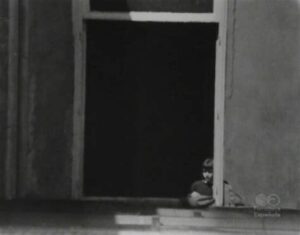
La voz narradora (voz off de María Luisa Elío) es la de una niña-mujer que nos cuenta la historia de Gabriela Elizondo a través de sus recuerdos de niña, del trauma de la guerra, de los bombardeos y de la errancia familiar. La textura cinematográfica, su expresión plástica (la luz, el color, los planos, etc.), es absolutamente pictórica, nos hace pensar en Vermeer, De Chirico o Zurbarán.
He rezado para volver a encontrar mi infancia, y ha vuelto, y siento que aún está dura como antes y que no me ha servido de nada envejecer. (Rainer Maria Rilke)
La película nos habla del exilio infantil, del exilio de los niños: cómo lo vivieron, cómo lo imaginaron y cómo lo recordaran.
En aquellos días en que ocurrió, aún era yo muy niña, qué diera yo por ser tan niña ahora, si es que acaso he dejado de ser. Y entonces, había algo en las calles, algo en las casas, que después desapareció con aquella guerra, aquella guerra que una vez la vi por los tejados de las casas, aquella guerra que apareció un día en el grito de una mujer.
La niña tenía miedo. Era un miedo tan grande que no la dejaba moverse. ¿Qué haría la niña con ese miedo que le pesaba tanto? Llevaba ya con él mucho rato, sentada en aquel pasillo sin atreverse apenas a mover. Llevaba también mucho rato pensando por qué tenía miedo y no sabía. Ella sabía cuándo había sido mala de qué tenía miedo. Sabía que no debía desobedecer ni gritar ni pelearse con sus hermanas. Sabía también que debía estudiar y ser buena para que no la castigaran. La niña sabía muchas cosas pero no sabía por qué tenía miedo. No era hoy el diablo lo que la asustaba, porque ella había sido buena. Ni tampoco el coco que se esconde para asustar a los niños malos, no, no era esto, porque ella había sido buena. ¿A qué tenía entonces tanto miedo la niña, si sabía que a los niños buenos no se les castiga? Pero yo seguía encogida en aquel pasillo, con mi miedo ahí tan grande en un cuerpo tan chico para guardarlo, mientras las bombas deshacían la ciudad…
María Luísa Elío escribió el guión original, en un ejercicio de recomposición de esa infancia que ella sentía como “perdida”. Colaboró también en el guion, el crítico e historiador Emilio García Riera. La primera parte de la película (Gabriela niña) tiene una secuencia narrativa lineal, y la segunda parte es el retorno imaginado, añorado (presentido) de Gabriela adulta a su Pamplona natal, que se transforma en una terrible decepción, en una angustiosa crise de nostalgia.
Quizá, solo quizá, con los años, muchos, muchos años, se logre mitigar ese dolor, pero se mitiga sólo porque va dejando de ser. La misma melancolía no es sino un recuerdo que se ignora. (M.L.Elío)
Una película poblada de ausencias, llena de silencios, porque el exilio es también un silencio. Hay dos tipos de imágenes: la imagen tiempo, visionada en la consciencia de la niña, los planos estáticos, y la imagen movimiento, en la que se mueven los exiliados. Memoria lineal de los hechos, que se presentan en un orden cronológico. Pero la memoria no es lineal, es más bien circular y reiterativa. Los recuerdos son incontrolables, insistentes, como la música repetitiva e insistente de la película.
No era tan joven ya cuando volvió a su casa. Quizá fue eso lo que le hizo no reconocerla. Habían pasado muchos años, tantos años como hacía que había empezado la guerra de España; y ahora le era casi imposible reconocer aquello. La casa donde ella había vivido siempre, donde se escuchaba la voz de sus padres, estaba ocupada ahora por gentes a las que no conocía y a las que tampoco hubiera querido conocer.
Pero si los muebles eran otros, si en el lugar del arca donde ella se escondía de pequeña había ahora una estantería, las paredes, sin embargo, eran las mismas. ¿Por qué entonces le costaba tanto trabajo reconocerlas?
Recordaba que de niña había escrito con una piedra en un balcón: “papá y mamá”. ¿Lo encontraría quizás ahora? Y estaba ya en el balcón buscándolo cuando oyó que alguien la llamaba: “Niña, ¡a cenar!”. ¿No era ésa la voz de su padre? Ha debido llegar de la oficina, pensó, y está de buen humor porque oigo a mamá reírse. Pero, ¿por qué estoy yo en el balcón?; ¿qué hago aquí?, ¿a qué jugábamos?: “jugábamos a escondernos”, oyó a su hermana decirle, ¿pero dónde estaba su hermana que no la veía? ¿Cecilia, dónde estás? “No soy Cecilia, soy Carmenchu”, oyó que contestaba su otra hermana, pero tampoco a ella la veía.
¿Qué le pasaba que no veía a nadie?, ¿por qué estaba llorando?, ¿por qué había crecido tanto?
“Mamá, ¿por qué soy tan alta si sólo tengo siete años? Mamá, contéstame, ¿dónde estáis todos?, ¿por qué os escondéis? Ya no quiero jugar, no esconderos, salir de donde estéis. Salir mamá, salir, volver a estar en casa, papá cántame aquella canción que me gustaba, y vosotras, vosotras dos hermanas, jugar conmigo, no me dejéis aquí en el balcón; no me dejéis sola, venir a jugar conmigo, no dejéis que esos cuatro hombres con fusiles se lleven a papá, no vayáis a dejar que caigan esas bombas sobre nosotros, ¿no veis que mamá dice que no tiene miedo, pero es mentira?, venir a jugar conmigo que si no, después ya no podremos hacer nada, que nos habrán separado y será ya tarde; no esconderos, jugar conmigo, volver, volver a estar en casa, venir, ayudarme, ayudarme por favor, ayudarme que yo no sé por qué he crecido tanto.
Crónica del dolor del exilio, que fue el de toda una generación. En el balcón vacío es una película mítica, poética, sobre la segunda generación del exilio español en México. La única película hecha en el exilio por exiliados sobre el tema del exilio.
Con el estallido de la Guerra Civil los Elío tuvieron que exiliarse en México, cuando María Luisa tenía sólo trece años. Jomí García Ascot inmigró con su familia cuando tenía doce años. Se casaron en 1954, se separaron en 1968.
María Luísa no pudo volver a la tierra de su infancia hasta 1970: volvió con 44 años. El diario de aquel viaje de regreso se materializó en un libro, Tiempo de llorar (El Equilibrista, 1988 -Turner, 2002). Volvió a Pamplona de la mano de su hijo, Diego García Elío, que entonces tenía seis años:
Recuerdo poco, era muy pequeño. Aquel viaje fue todo para mi madre. Se había imaginado ese regreso muchas veces. Luego, cuando fuimos de verdad, se dio cuenta de que las coincidencias de su mente con la realidad eran abrumadoras. Para ella fue una experiencia muy desconcertante, cuenta García Elío.
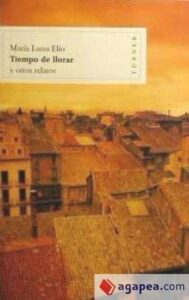
En Tiempo de llorar, diario del regreso a Pamplona, la ciudad de su infancia, María Luisa escribe:
Hacía mucho frío, llovía, y en un letrero como cualquier otro decía: ‘Pamplona’. Ahora ya podía volver, y tenía la certeza, con sólo mirar el letrero, que la gente estaba muerta. (M.L.Elío)
Cuenta su biógrafo, Eduardo Mateo Gambarte:
Cuando en 1970 María Luísa Elío vuelve por primera vez a Pamplona, de la que había salido en 1936 y en la que seguía viviendo en su memoria, se encontró con una fría estación poblada de sombras, de silencios y de ausencias. Una mujer aferrada a su pasado y a la mano de su hijo de seis años buscando fantasmas del pretérito en el balcón vacío de una casa deshabitada desde su infancia. Solo escucha la voz de toda la nostalgia acumulada durante más de treinta años. La voz de nadie. Nadie la reconoce y ella tampoco reconoce sus recuerdos. “Regresar es irse”, concluirá la autora tras ese intento baldío de recuperar su pasado.
En la segunda parte de la película, Gabriela adulta, revive sus recuerdos en su antigua casa de la avenida Rocesvalles, en Pamplona, que ahora está desocupada:
El mal no es el exilio, el mal es el retorno. (Cesare Pavese)
La película, dedicada a los españoles muertos en el exilio, fue realizada veintiún años después de la victoria del bando de Franco, por personas que habían vivido más tiempo en su país de acogida que en España. Ese es el mayor cambio de perspectiva de esa generación. Frente a la seguridad del regreso del primer exilio, la duda de esta segunda generación de exiliados, como lo explica Ángel Quintana:
“En aquel momento se encontraban en plena juventud y comenzaron a pensar en la posibilidad de recuperar la memoria de sus orígenes. Todos ellos querían volver al mundo paradisiaco que habían perdido de pequeños. La pérdida de la infancia gravitaba de forma traumática en su existencia.”
María Luisa Elío nunca se consideró escritora, encontró refugio en el teatro. Estudió en la escuela del japonés Seki Sano, refugiado de la Segunda Guerra Mundial. Formó parte del grupo de teatro vanguardista Poesía en voz alta, donde conoció a Octavio Paz, Leonora Carrington o Juan Soriano. Hasta que se casó con mi padre. Tenía un método caótico y espontáneo. Las ideas la sorprendían en cualquier momento. Las plasmaba en cuartillas, cuadernos a medio acabar, tarjetas… Nunca vivió de la escritura.”
En los años cincuenta María Luísa colaboró en varias películas de época y publicó cuentos en medios periodísticos como el suplemento ‘México en la Cultura’ del diario Novedades y la Revista de la Universidad. También hizo lecturas de sus cuentos (“De las señoras”, “Del miedo y del recuerdo”) en el Ateneo Español de México.
El en balcón vacío es una película sensible, intimista, femenina. En la escritura fílmica, la historia se confunde con la memoria. Historia, memoria, imaginación. Memoria de los sentidos (la sensación de frio extremo, los sonidos de la guerra), los continuos traslados domiciliarios (Elizondo, Valencia, Barcelona), el paso de la frontera (Le Perthus), el viaje hacia París, y después rumbo al puerto marítimo de El Havre, la larguísima espera para la revisión de documentos, y por fin el embarque y el viaje, en 1940, a México. Imágenes y recuerdos imborrables.
Memoria de los objetos también: “yo entonces me llevé un tapón.”
El sentimiento del tiempo, y la consciencia traumada de una niña que se acuerda, que no puede olvidar.
Es increíble cómo pasa el tiempo… cuántas veces había oído decir esta frase y ahora estaba ahí, conmigo, era yo quien la repetía: “es increíble cómo pasa el tiempo”.
¿Por qué no me habían dicho antes lo que era el tiempo? ¿Por qué no me lo habíais puesto entre las manos y me lo habíais enseñado? “Mira niña, esto es el tiempo”.
El tiempo son diez dedos para contarlo, tengo siete años, cinco de la mano derecha y dos de la izquierda. Y después el tiempo es Navidades, “la otra Navidad y la Navidad próxima”. Y después deja de ser tiempo y se hace fecha, mi santo, mi cumpleaños y el día de mi primera comunión. Y después el tiempo se hace distancia, cinco años después de la guerra, nueve años después de la guerra, quince años después de la guerra. Y después no hay, ya no hay tiempo contado, sólo hay tiempo que pasa: seis años… siete años… o una tarde agradable, pasada en casa.
Según Paul Ilie que, en su famoso libro, Literatura y exilio interior, definió el exilio como un no lugar (el exilio es una condición mental mucho más que material). Está claro que el lugar (no lugar) desde el que se filma esta película es el exilio: el mundo interior y la experiencia de María Luísa Elío. El imposible regreso de volver a donde se ha vivido, a donde se ha sido niño.
Por eso sé que regresar es irse, irme, irme de una vida, casi de toda una vida, porque sé que ahora la mirada tan sólo va a servir para borrar, lo sé, lo sabía, y en ese saber tiene una importancia total el verificar. Pamplona: tan solo un lugar.
POEMA DEL EXILIO (Jomí García Ascot)
Hemos venido aquí, desde muy niños,
a esperar, y a vivir.
Llevamos en las manos muchos años
y el otoño en lejanos comedores
vastos de sobremesa y de presagios.
Llevamos en las manos luces amarillentas,
deberes escolares,
gestos que conocimos
como iglesias de pueblo,
y en jardines que el invierno alargaba
los pequeños amigos desterrados.
Llevamos trenes, viajes, estaciones de noche,
el olor del hollín y vidrios empañados
y nuestros padres, que eran ya tan mayores
y murieron tan jóvenes aquí.
Hemos venido así, desde muy lejos,
desde las Navidades, las vísperas de todo,
y llevamos lo lejos en el sabor de lápiz
de la boca.
Hemos venido aquí y hemos visto en el cielo
cómo suben las cosas por la luz,
este mundo que crece, los océanos.
Hemos subido aquí, sobre esta costa
que se abre en el azul,
los vientos grandes, los caballos del tiempo
que cruzan la mañana.
El destierro es lo inmenso, la llanura
donde rebota el sol, esta distancia
entre el pecho y el aire.
Y hoy miramos de aquí nuestra casa perdida
nuestra Europa lejana. Miramos por encima
como el balcón, como la nube blanca.
Ya es ancha nuestra vida,
ya cabe en la mirada
con el parque lejano, las manzanas.
Ficha de la película
Título: En el balcón vacío
Año: 1962
Duración: 70 min.
País: México
Dirección: Jomí García Ascot
Guión: María Luísa Elío, José Miguel García Ascot, Emilio García Riera
Fotografía: José Torres
Reparto: Nuri Pereña, María Luisa Elio, Conchita Genove, Jaime Muñoz De Baena, Belina García, Fernando Lipkau, Alicia Bergua, Martín Bergua.
Productora: Ascot, Torre
Género: Drama | Guerra Civil Española.
